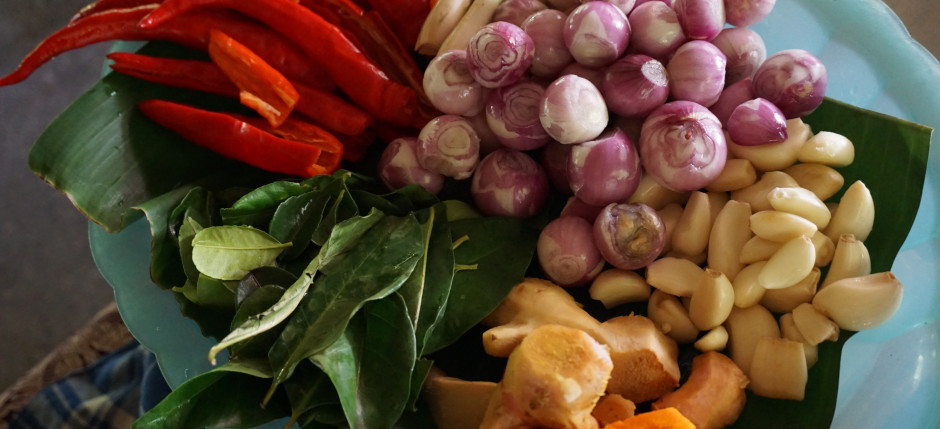
Indonesian cooking class
Last week I took a cooking class in order to learn how to make some classic Indonesian dishes. If you’re ever in the Sanur area, I’d highly recommend it – Bamboo Shoots cooking school. They picked us up early in the morning and took us to the morning market. Because it’s the slow season, it was just me, two French women and a lady on a holiday by herself from Australia.
The morning market is the place where the Balinese shop, and the prices are 1/4 or less of what they are in the Western-friendly grocery stores. Everything takes haggling, of course, but there you can find everything you’d need to make your own morning offering (the Balinese set them out three times a day), or buy a pre-made one yourself, to find fish caught that morning, old ladies cutting up chicken with meat cleavers, fresh veggies and fruit and snacks.
Time out. I need to explain the offering situation here because it’s so very prevalent (I found one in a shoe department of a store yesterday) so if you go to Bali it’ll help to understand it. The people of Bali used to be animists before Hindus who wanted to practice their religion freely fled from a Muslim dominated area to Bali. So they kind of merged the two belief systems. They believe in three gods (Wisnu, Brahma and Siwa) that live on Mt Agung, a 10,000 foot volcano here, and several demons who must exist to balance things out. Both gods and demons must be kept satisfied with offerings and ceremonies in order to maintain that balance and keep the peace on the island. Every morning, the Balinese prepare little baskets called canang sari for the gods woven out of palm leaves and fill them with various items: fresh flowers, crackers, lime, sweets, and coin money, and always sprinkled with holy water. They also have segehans offerings on the ground for the demons, which can contain rotten food, as the demons are not supposed to care much.
It is a way to thank the gods for what they’ve provided. This is special to Bali and as far as I’ve read, this practice is unique to their branch of Hinduism.
You will see women set these offerings out every morning, and they are EVERYWHERE. On the dashboard of cars, in front of every single business, throughout the grocery store, tied to the grill of a motorcycle. Through the course of the day, birds pick at them, people step on them, but it doesn’t bother the Balinese. The next day they just sweep them up and make a new one. I haven’t seen if our housekeepers set them out at our house, but I’ve read stories of other long term travelers whose housekeepers or neighbors were so uncomfortable that they weren’t offering anything that they asked to put out something on their behalf. They take this very seriously and perform this ritual every day. Most working women buy pre-fabricated baskets like the ones sold at the market, or at least an already woven palm leaf basket to fill. But some women especially in the villages still make their own, and depending on how many they make, that could take an hour or two as they weave the baskets by hand!
Okay, back to the class – our teacher picked up what we would need for the class and then we were brought over to the school for a light breakfast (should have skipped that). Then we dove right in! In some classes, it’s much more focused on demonstration. They put us straight to work with sharp knives slicing up lemongrass, chilies, garlic, deep frying peanuts, everything. It was way more fun than cooking in most of the places we stay at, who have limited materials and dangerously dull blades.
The thing that surprised me the most was that most of the dishes require a paste to coat or cook the food in, so all of the spices get perfectly melded together in a wide volcanic stone mortar while your arm holding the pestle gets extreeeemely tired. After about 10 – 15 minutes of us making decent headway but nowhere near our goal and in some pain, our male instructor stepped in and with deftness he pulverized the rest in about 2 minutes.
Foodie friends – these gorgeous stone mortars here are about $5, and weigh 20 lbs. I keep finding amazing things to take home with me but the only thing I’ve dared to buy so far given our limited space are some comfy Bali pants. :/ I got to see fresh turmeric root (looks like ginger and stains your fingernails yellow), galangal root, and they taught us how to make coconut milk. See, I’m completely ignorant when it comes to coconuts. I assumed that the brown hairy things you see in American grocery stores are what grew on the tree. Sort of. A coconut actually looks much larger because it’s protected by a fleshy exterior. The brown thing is the nut inside, and to get it out they have to hack away the protective flesh from the nut with a machete. It won’t look that brown and dry unless it’s been extracted and dried out. Inside the nut, when the coconut is young, you have a thin lining of meat that isn’t yet hardened but is, frankly, a little goopy. In young coconuts, the nut is filled with water which is where they get coconut water. As the coconut matures, the water inside the nut dries up and the meat inside it gets harder. When you harvest a mature coconuts, you cut away the meat, grate it if you want your standard shredded coconut, and then make the milk by soaking the shreds in about 1 liter of water, then by hand squeeze them into a bowl. The first press extracts the coconut cream, which is thicker and you can buy canned in a store for a higher price. Every press after that yields coconut milk until it starts to get clear and run out. After you’re done, you throw away the coconut shreds, because there’s no more flavor left! And at this point you have about 1 liter of coconut milk. Of course I’ll just buy it from the store – it’s a lot of work! But it was really interesting to see it being made. And to see how long it took our male teacher to shred the coconut by hand with a box grater..
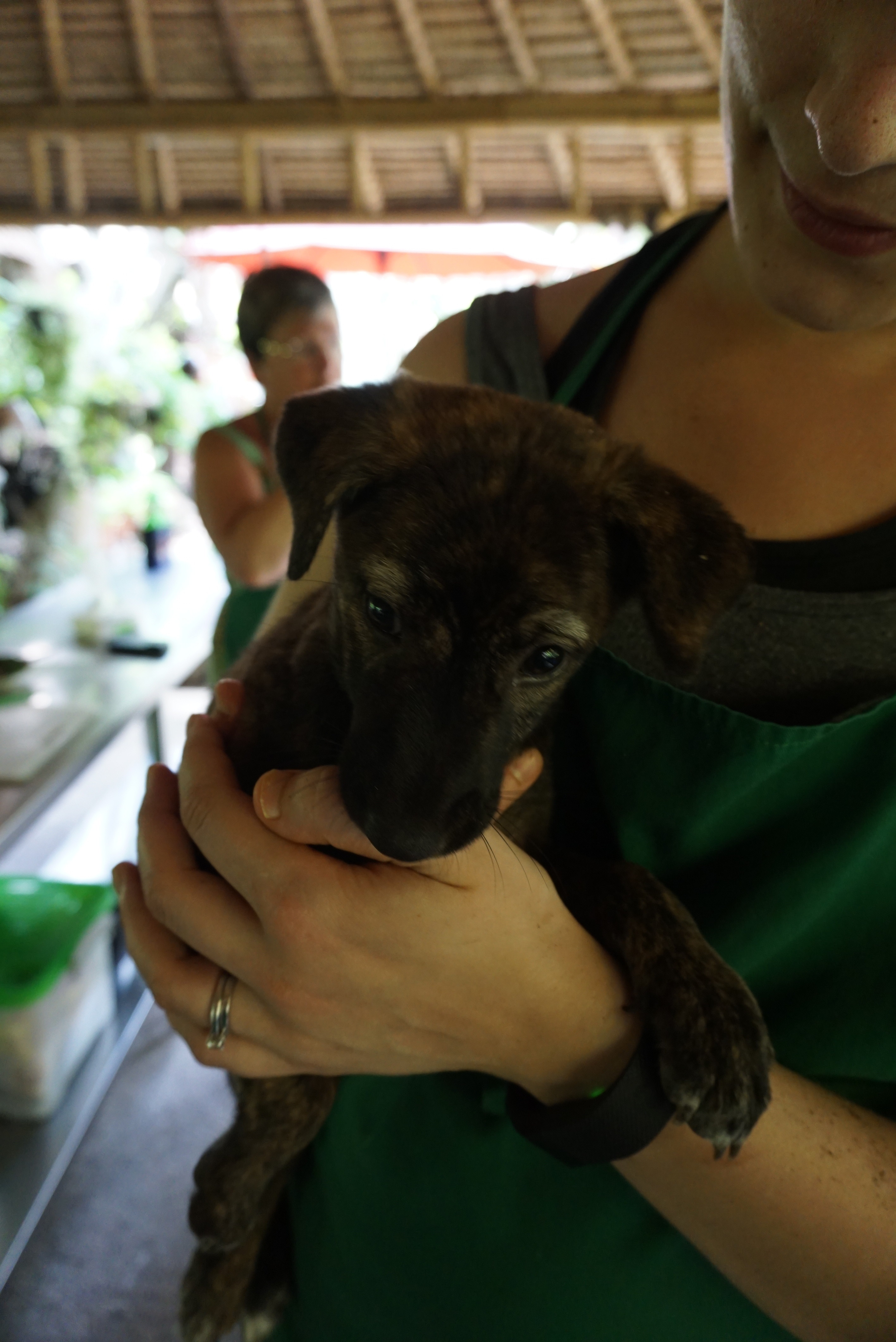
one of our two assistants. He and his brother made sure that any bits that fell to the floor were properly cleaned up. Their names? Gin and Tonic. 😀
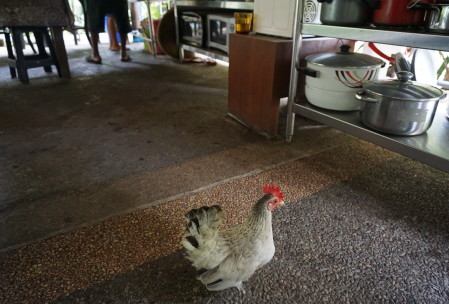
as this was an open kitchen, and the Balinese keep them for pets, we had some chickens running around our (impeccably) clean kitchen.
All in all, we made six dishes:
We ate all of it, it was all delicious and so far I’d not eaten sate that good in SE Asia. My hope is to do a couple more of these as we travel so that I can amass some good recipes and skillz and impress you all with a feast when we return!
One more thing…I have some good news to share. We have uploaded PhotoSpheres for your viewing pleasure. If you have a Google Cardboard (we gave out several before we left) you can use that and your Android phone to view them in the Google Cardboard app. Otherwise, you can view them in your browser…it just won’t appear in 3D.
Please visit the PhotoSpheres page for more info!
Categories: Indonesia
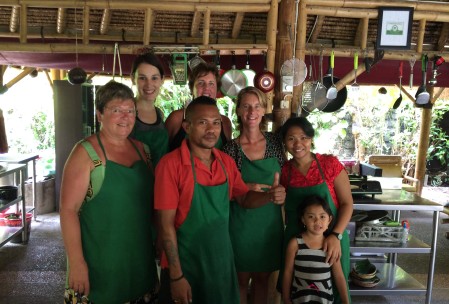
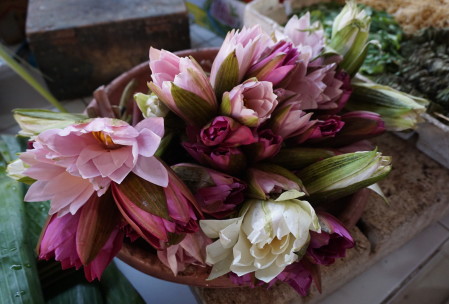
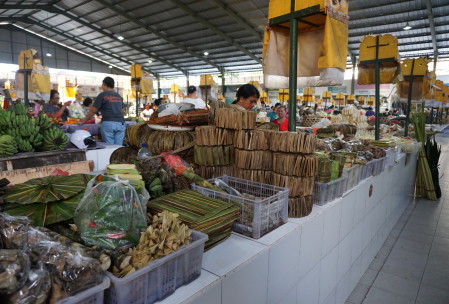
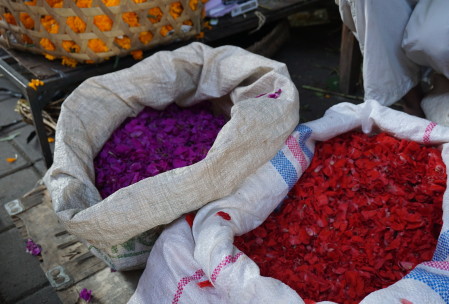
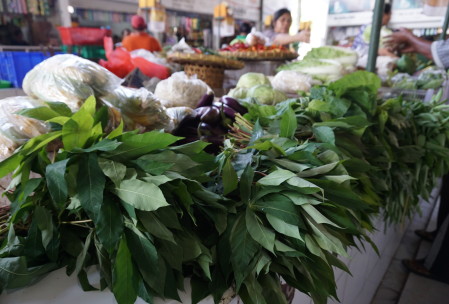
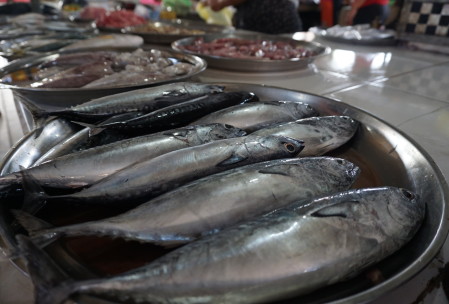
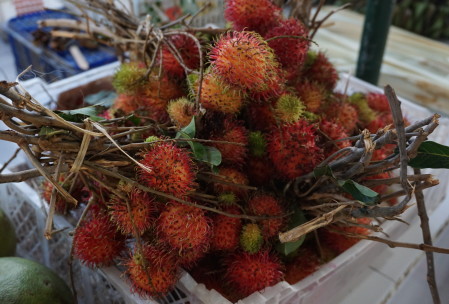
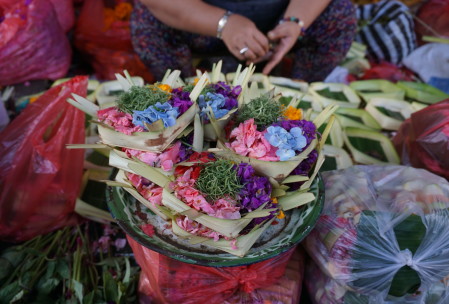
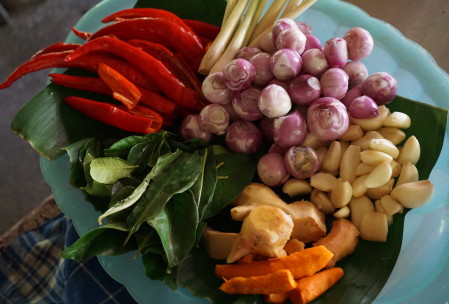
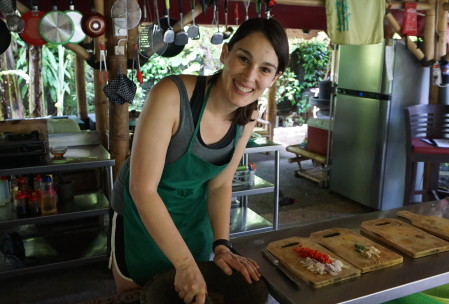
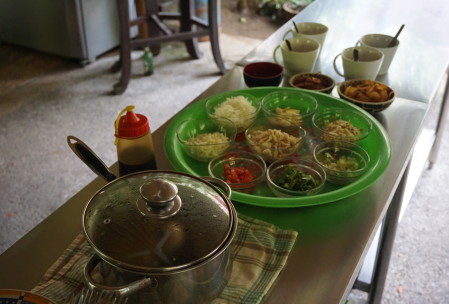
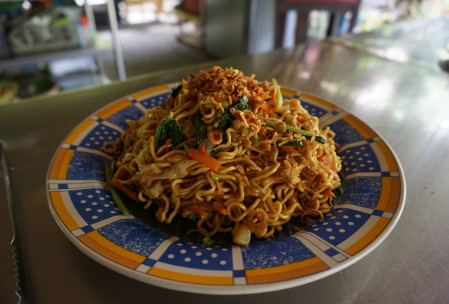
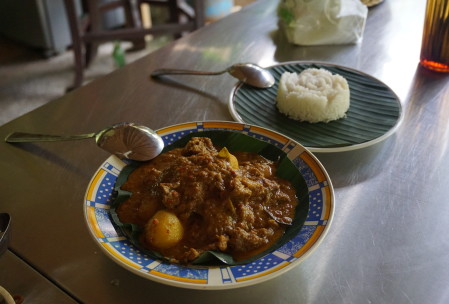
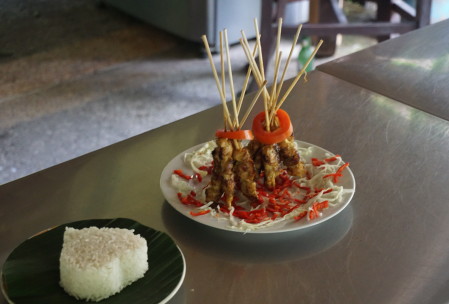
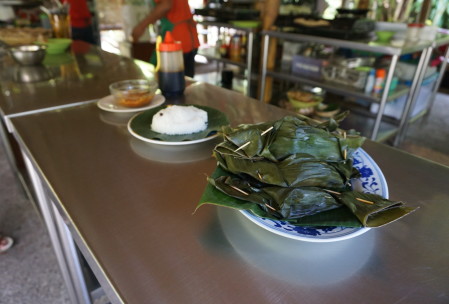
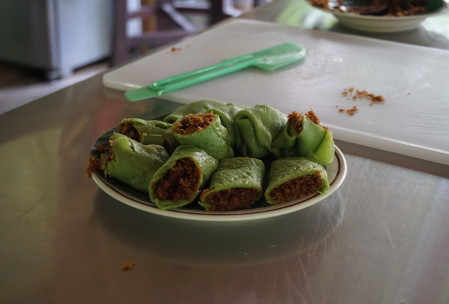
Leave a Reply